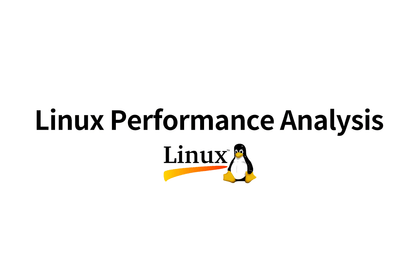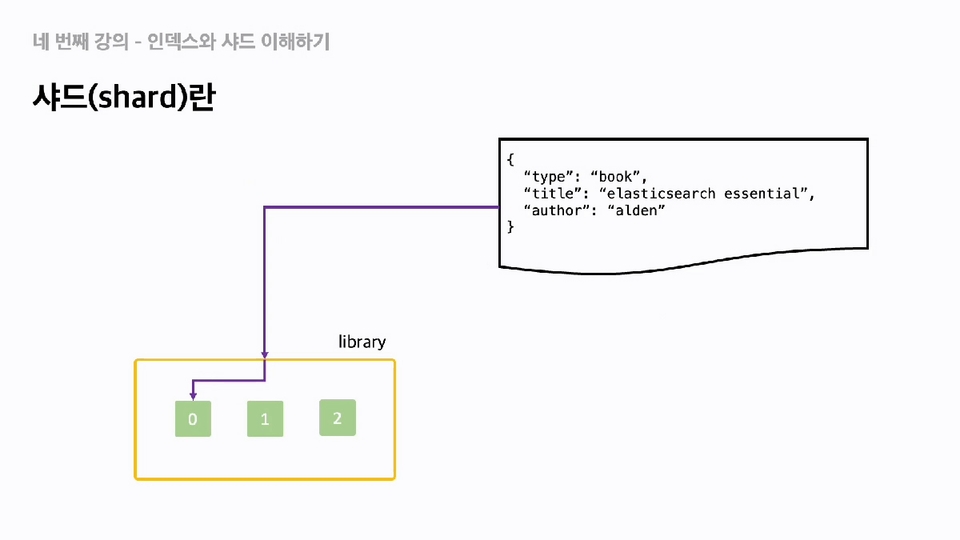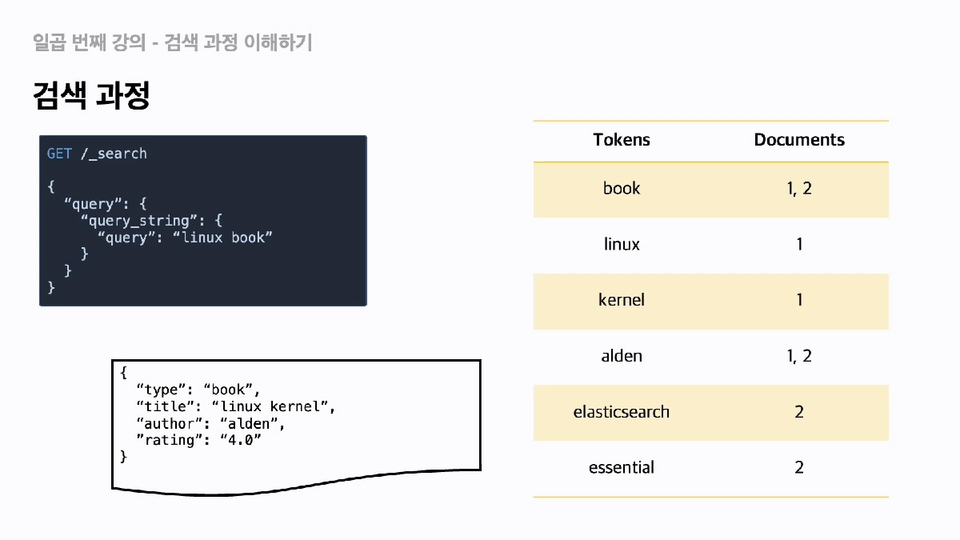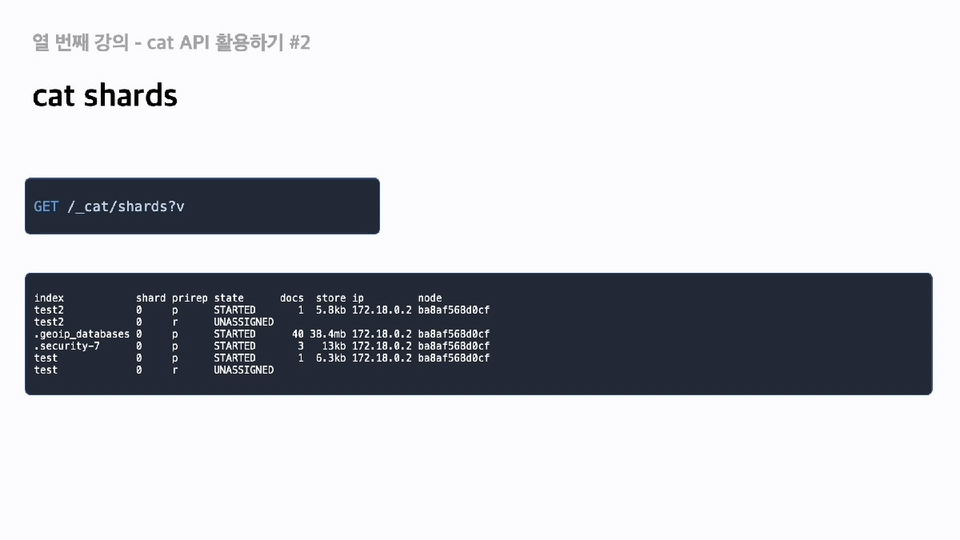
Linuxのパフォーマンス分析を始める
alden
Linuxサーバーのパフォーマンス分析に必要な基本的な命令の理解、ネットワークのトラブルシューティングのためのtcpdump命令の使用方法、ケースに基づくトラブルシューティング方法を教える講義です。このレッスンにより、Linuxサーバーで発生するさまざまなパフォーマンス問題を解決できます。
초급
Linux
This course will teach you how to understand the internal operations, monitor, and troubleshoot based on cases that are essential for operating an ElasticSearch cluster. Through this course, you will be able to operate an ElasticSearch cluster more stably.

ElasticSearch Basic Concepts
ElasticSearch Monitoring
Understanding ElasticSearch in action
ElasticSearch Troubleshooting
Want to get the most out of ElasticSearch?
Principles + Monitoring + Troubleshooting all in one!
With its easy installation using RPM and Rest API-based usability, ElasticSearch quickly joined the ranks of well-known open source tools. In particular, with the accelerated transition to Kubernetes-based container environments, the need for systems capable of fast and reliable log collection and querying has grown, and ElasticSearch is gaining traction as a viable alternative.

Many services build and operate log collection systems based on ElasticSearch, thanks to its ease and speed of startup. However, as this ease and speed of launch increases, various unforeseen issues arise as the service grows beyond a certain scale.
ElasticSearch can be deployed as a cluster. Therefore, if properly configured for its intended use, it can deliver the desired performance and operate reliably enough that service is not affected even if one or two nodes fail. Deploying ElasticSearch as a cluster requires a thorough understanding of the underlying concepts and technologies.
ElasticSearch is evolving rapidly, and its version upgrade cycle is correspondingly rapid. However, there are internal operations that remain unchanged even after each version upgrade. Understanding these internal mechanisms is essential for stable operation. In particular, understanding how indexing and searching work and the importance of shard sizing is crucial for responding appropriately when cluster issues or performance issues arise.
Therefore, this lecture won't cover a specific version of ElasticSearch. Instead, it will explain core behaviors that apply equally across all versions , and through case studies, it will cover how to monitor clusters and how to handle issues when they arise. We hope you'll gain a solid understanding of the underlying principles that can be applied and applied regardless of the version of ElasticSearch you're running.

Those who have already built and are using an ElasticSearch cluster

Those experiencing service stability issues due to frequent failures in the ElasticSearch cluster

Anyone considering introducing ElasticSearch to their project or service
💬 “I want to run ElasticSearch stably, but I lack basic knowledge about ElasticSearch.”
Understanding how ElasticSearch indexing and searching work will help you understand why the number of shards matters. We'll provide you with the fundamental knowledge needed to manage these operations.
💬 “I keep having issues with my ElasticSearch cluster, and it’s hard to figure out what’s causing them and how to fix them.”
Understanding the internal workings of a system makes it easier to pinpoint the source of problems when they occur. This course will provide you with the fundamental knowledge needed for troubleshooting .
We'll explore the overall features of ElasticSearch and the essential concepts required for its operation. We'll explore what a cluster is, what a node is, and the characteristics of ElasticSearch as a cluster. We'll also learn about fundamental concepts like indexes, shards, and mapping.
✅ You will be able to understand the essential concepts needed to operate ElasticSearch.

We'll explore how indexing and searching are handled within ElasticSearch, why the number of shards matters, and what to watch out for. You'll also understand the differences between text and keyword type fields and learn when and how to best utilize them.
✅ Understand how indexing and searching work inside ElasticSearch.

ElasticSearch provides an interface for viewing various information via the CAT API. We'll examine the most commonly used CAT APIs, including CAT health, nodes, indices, and shards, and learn when to utilize each. You'll learn which metrics to monitor when monitoring your ElasticSearch cluster and what they mean.
✅ Learn how to monitor your ElasticSearch cluster and understand what key monitoring metrics mean.

Operating an ElasticSearch cluster can lead to various failures depending on the situation. We'll examine the most common failure scenarios, case-by-case, and learn how to troubleshoot ElasticSearch clusters by identifying their causes and resolving the issues.
✅ Find and resolve issues that occur in your ElasticSearch cluster.

I have been working on building and operating ElasticSearch clusters at Kakao for over three years and have written the book, “ ElasticSearch Operation Know-How from the Basics .”
Currently, I work as an SRE at Carrot Market, sharing various knowledge through Brunch and Tistory , and also creating open source related to ElasticSearch.
I hope this lecture will help many people use ElasticSearch 🙂

Q. Can I take the course even if I don't know anything about ElasticSearch?
No. This course does not cover building ElasticSearch, so basic experience is required.
Q. How much operational experience do I need to have with ElasticSearch clusters?
Even if it's not a large scale, it's enough to have some experience building a basic cluster and indexing documents.
Who is this course right for?
People who want to use ElasticSearch in their work
Anyone with experience with ElasticSearch who wants to solidify their foundation
Need to know before starting?
Basic Linux Commands
Basic ElasticSearch deployment experience
1,676
Learners
113
Reviews
62
Answers
4.9
Rating
3
Courses
네이버 클라우드, 카카오, 위버스 컴퍼니를 거쳐 지금은 당근마켓에서 안정적인 서비스 운영을 위해 SRE 로 일을 하고 있습니다.
리눅스 커널 이야기와 기초부터 다지는 ElasticSearch 운영 노하우 두 권의 책을 집필 했습니다.
All
19 lectures ∙ (3hr 10min)
Course Materials:
All
69 reviews
4.9
69 reviews
Reviews 3
∙
Average Rating 5.0
Reviews 5
∙
Average Rating 5.0
Reviews 27
∙
Average Rating 4.9
Reviews 71
∙
Average Rating 5.0
Reviews 14
∙
Average Rating 4.8
$26.40
Check out other courses by the instructor!
Explore other courses in the same field!